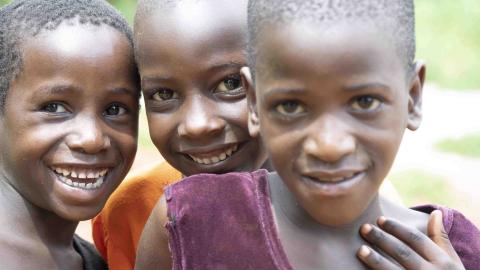
Our History
Building brighter futures for vulnerable children…
Our story in Uganda started in 1986 as a relief organisation in response to the 1981 – 1986 guerrilla war that ushered in the National Resistance Movement government. Much like any community ravaged by war, there were hardly any social services or structures left in place in the central and southern part of the country. Thousands of children were orphaned and left to fend for themselves.
With this background, World Vision Uganda started its operations as a purely relief organisation. Over the years, we continued to grow and expand to other regions, such as southern Uganda which was the area hardest-hit by HIV/AIDS epidemic. As our work has expanded, our operating models have changed. Today, we primarily use development-oriented approaches, focusing on: strengthening capacity for community participation and development, social service provision as well as influencing governance and policy issues. Although our approaches have adapted, one thing has stayed the same – the children are still at the centre of all that we do.
In 1988, our work expanded to Northern Uganda in response to the mounting need of relief for children, families and communities affected by Lord’s Resistance war. Thirty years later, we are still operating in Northern Uganda, helping children and their families rebuild their lives and hopes which were devastated by the war led by Joseph Kony.
Today, our staff work in 49 out of 135 districts around the country. With our long-term grassroots presence and reach to the most marginalized and excluded of society – the children – we continue to focus on the root causes of poverty and other vulnerabilities. With an integrated and multisectoral approach, our teams are transforming the lives of children and communities in Uganda and helping them to reach their full potential.
Our approach to development is focused on improving the well-being of children, especially the most vulnerable. A commitment to sustainability is at the heart of all we do.
Building on local assets in collaboration with communities and partners, we contribute to the sustained well-being of children by working at four levels:
Children
Empowering children with good health, spiritual nurture, and basic literacy, numeracy and essential life skills. These skills enable children to be productive, contributing citizens and agents of change throughout their lives.
Households and Families
Improving household resilience by increasing livelihood and caregiving capacity. Caregiving includes physical, psychosocial and spiritual care, as well as issues of resource allocation and gender equity within households. This ensures that increased income and assets lead to improved child well-being for both boys and girls.
Community
Strengthening the resilience and capacity of communities and partners to respond to present and future challenges to child well-being, including disasters, in ways that are environmentally sustainable.
Enabling Environment
Working to ensure that systems, structures, policies and practices (at local, national, regional and global levels) support and protect the well-being of children, especially the most vulnerable.